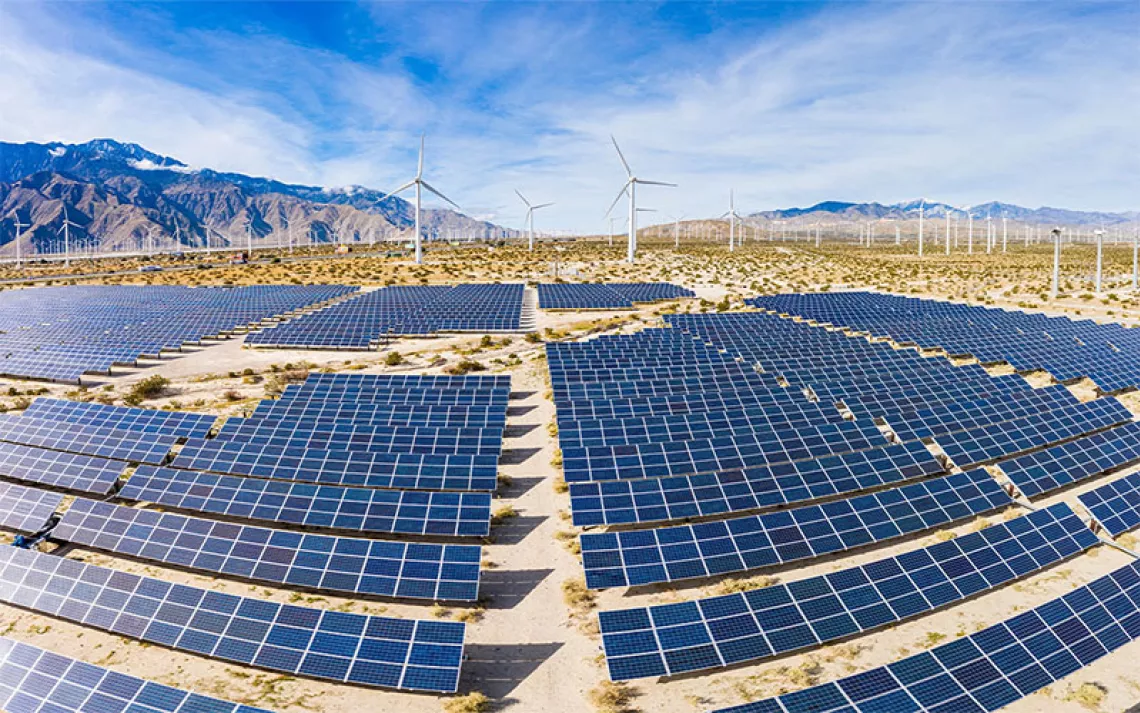Are We Stuck with Corn Ethanol Forever? (Big Ag Would Like Us to Think So.)
It's crazy to use 40 percent of the U.S. corn crop to fuel our cars and trucks

Corn at the GreenField ethanol plant in Chatham, Ontario. Ethanol was supposed to free us from oil, but its environmental advantages are questionable at best. | Photo by Mark Blinch/Reuters
When Congress created the Renewable Fuel Standard (RFS) in 2005, corn ethanol was touted as gold-hued liquid happiness that would reduce U.S. dependence on foreign oil, support Midwestern farmers, cut fuel prices, and slash greenhouse gas emissions. It was also supposed to buy time for an even more environmentally benign biofuel—made from agricultural waste or perennial grasses—to reach the market.
Today, about 36 percent of the corn produced in the United States goes into gas tanks. This brings far more joy to corn farmers than environmentalists. While most researchers have found that ethanol's life cycle emissions are marginally better than gasoline's, the biofuel's distortion of the agricultural sector has resulted in bushels of other negative consequences: loss of wildlands, soil erosion, water pollution, ocean dead zones, groundwater depletion, and rising food prices. (The Sierra Club opposes further deployment of corn-based ethanol based on these impacts and the dubious net-carbon benefits.)
"Biofuel is without question the most water-intensive form of energy that there is. We're trading foreign oil for domestic water when we grow biofuels in the United States," says Kevin Fingerman, assistant professor of environmental science and management at Humboldt State University and a board member of the Geneva-based Roundtable on Sustainable Biomaterials.
You'd think the new Congress might want to revisit the issue, but corn ethanol has dug its roots in deep, and dislodging the RFS has proved nearly impossible. In recent years, bipartisan legislation aimed at repealing or reforming the ethanol mandate has failed to break through the opposition of corn-state Congress members.
New research only makes the picture worse. A recent study in Proceedings of the National Academy of Sciences details how monocultures of corn and soy in the northern Great Plains are crowding out commercial honeybee colonies. Another, from University of Michigan Energy Institute research professor John DeCicco, claims that biofuel crops absorb only 37 percent of the carbon generated by biofuel emissions. His headline-grabbing conclusion: Biofuels are associated with a net increase in CO2 emissions. (The ethanol industry quickly noted that the study was funded by the American Petroleum Institute.)
When the original RFS was passed, supporters presumed that corn ethanol would be quickly supplanted by "cellulosic" ethanol, made from non-food materials like switchgrass and agricultural waste. Cellulosic ethanol doesn't require massive inputs of water and fertilizer and can produce up to 98 percent fewer carbon emissions than gasoline. Back in 2006, venture capitalist Vinod Khosla predicted that the United States would be producing 39 billion gallons of it by 2017.
But producing fuel from grasses and wood scraps proved more expensive than anticipated. The companies Khosla backed went belly-up, and a number of others never got off the ground, despite hefty government investment. In the fall of 2016, two of the nation's six cellulosic ethanol plants were up for sale, and two others were not operational. The two that are running will produce a scant 60 million gallons a year total when they reach full capacity. And they rely not on switchgrass for their feedstock but on the stocks and cobs left over from corn-ethanol production.
While cellulosic ethanol looks a lot like the technology that failed, some observers claim that it's finally poised to come into its own. Jeremy Martin, senior scientist in the Union of Concerned Scientists' clean-vehicles program, argues that cellulosic ethanol can and should be part of the mix of climate change solutions. While he cautions that a minimum amount of agricultural residue needs to be left in the fields in order to sustain soil health, at the moment the corn-ethanol industry produces more than enough leftovers to serve as feedstock. Once cellulosic ethanol plants are up and running, he says, they can start using the promised switchgrass, a tall native perennial that has the advantage of reducing soil erosion with its deep roots. Perennial grasses, Martin says, "are not ploughed and planted every year, [so] they don't disturb the soil, and they're also great crops for making biofuels."
From an emissions standpoint, liquid-fueled vehicles are unlikely to ever be as efficient as electric ones. But trucking and aviation are not easily electrified, so biofuels could still be an important part of the mix, especially as gas becomes dirtier and the oil industry relies on more carbon-intensive shale oil and tar sands. (The carbon pollution associated with extracting and refining a barrel of oil has increased 30 percent in the past 10 years.)
How do we find our way out of the corn maze? Fingerman suggests we look to California's low-carbon fuel standard, established by former governor Arnold Schwarzenegger in 2007 but not implemented until 2011. It mandates a 10 percent reduction in the carbon intensity of transportation fuels by 2020, but—unlike the RFS—doesn't throw its weight behind any particular technology. Oil producers must either reduce their fuel's carbon intensity or purchase credits from a clean-fuel producer. The standard has worked so well that industry has actually exceeded the 2015 goal by 81 percent, mainly by relying on biodiesel, biogas, and electricity.
Until Congress revisits the RFS, though, nothing stands in corn ethanol's way. The RFS continues to set starry-eyed production goals for more environmentally friendly alternatives, but so far these next-generation biofuels are still hovering on the horizon like a mirage, always just a little farther down the road.
This article appeared in the January/February 2017 edition with the headline "Why-o-fuel?"
WHAT YOU CAN DO
Our reliance on corn ethanol has a negative effect on food prices, land use, and the climate. Sign a petition calling on the EPA to halt the increasing use of the fuel: sc.org/cornethanol.
 The Magazine of The Sierra Club
The Magazine of The Sierra Club



